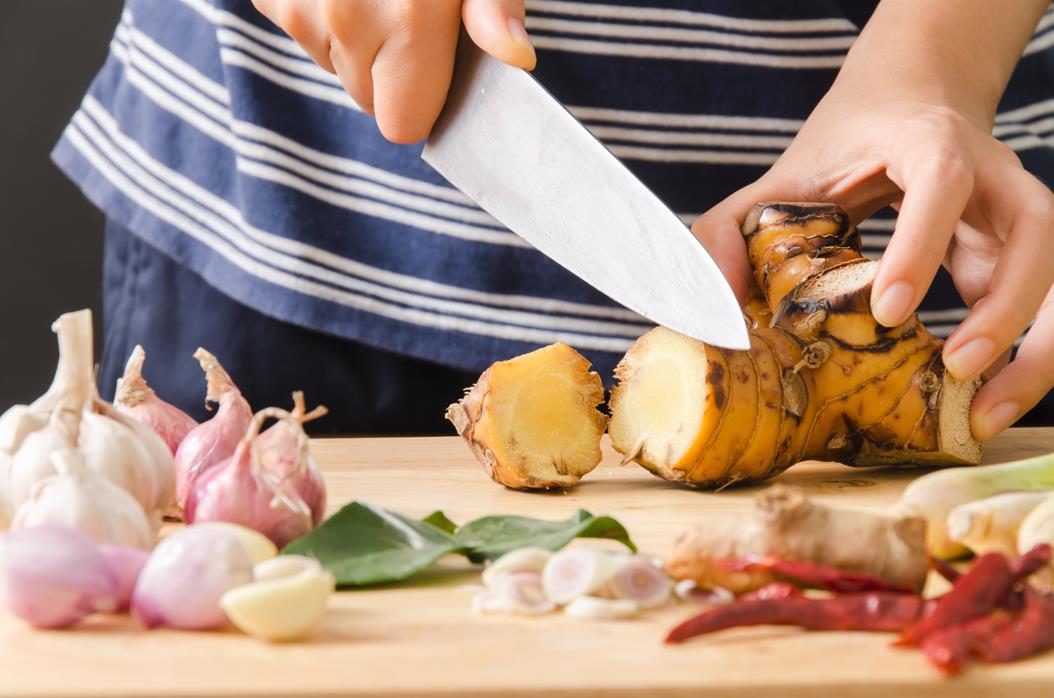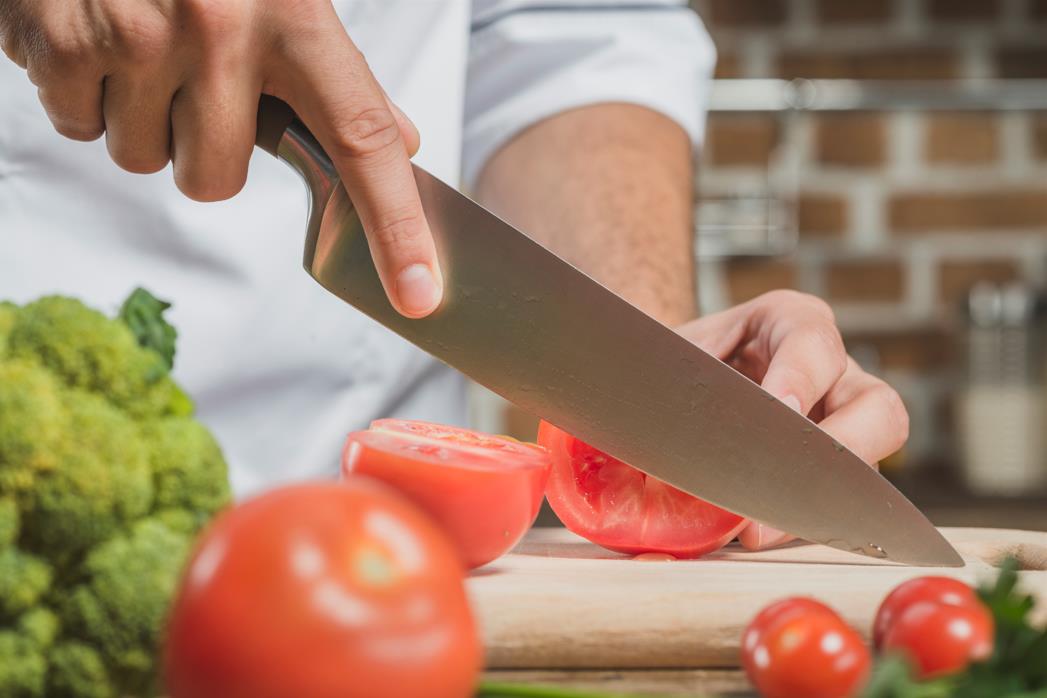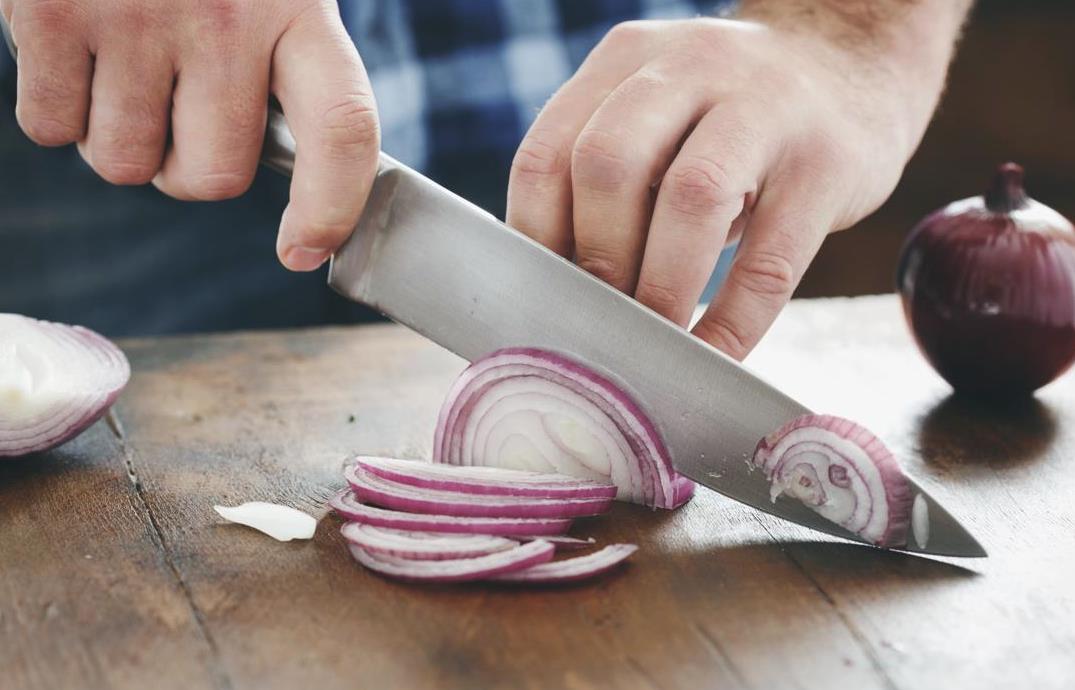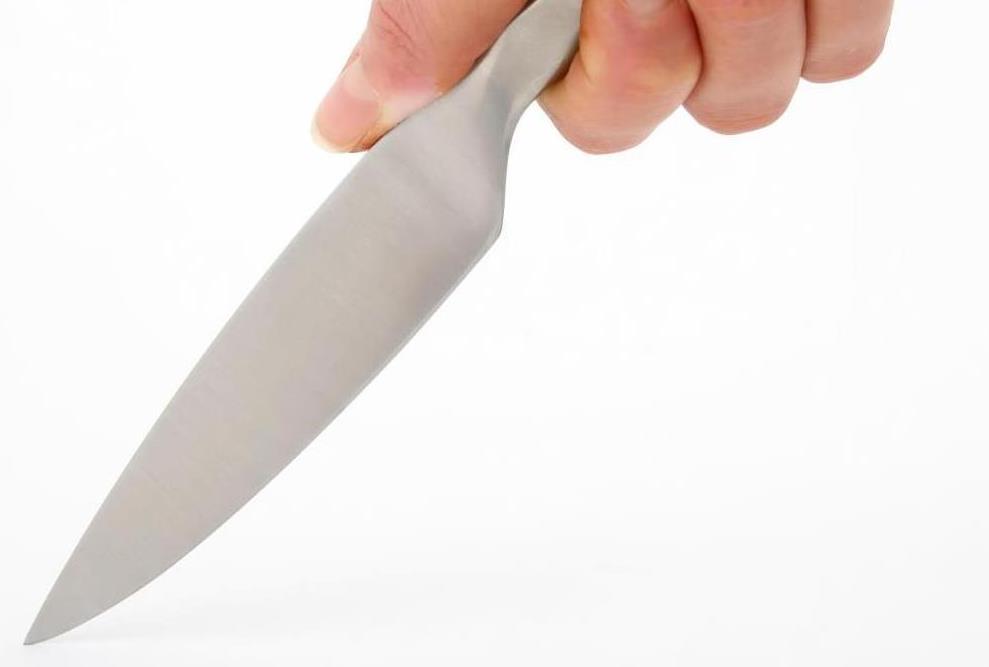When it comes to cutting chicken, whether you’re prepping for a grill-out or getting ready for a cozy family dinner, using the right knife makes all the difference. The best knife for cutting chicken is typically a sharp chef’s knife or a boning knife, depending on the task at hand.
A chef’s knife, with its wide and slightly curved blade, is versatile and perfect for slicing through the bird with clean cuts, while the boning knife, with its narrow and flexible blade, is designed to get close to the bone, making it ideal for deboning and removing skin.
If you find yourself often in the kitchen, curating your collection with knives that can assist in making meal prep more efficient is a smart move. This buyer’s guide will help you find the right knife for cutting chicken and possibly other poultry, compare differently used knives, and shed light on how they can contribute to your cutting.
Table of contents
Best knives to cut chicken
Undoubtedly, you can use any knife to cut chicken as long as it does the job right, but it can be time-consuming and require more effort. Take a paring knife as an example; the thin, short blade doesn’t help disjointing pieces and slicing a huge breast, though you can get around with cutting a chicken using a paring knife.
It’s critical to focus on the commonly used types of kitchen knives that can nail the job perfectly. These are chef’s knives, boning knives, and cleavers. While each of these knives has features that we can distinguish from others, it also comes down to your preferences as a cook. Here is a breakdown of what to expect when cutting chicken with these three different knives.
Best overall – chef’s knife
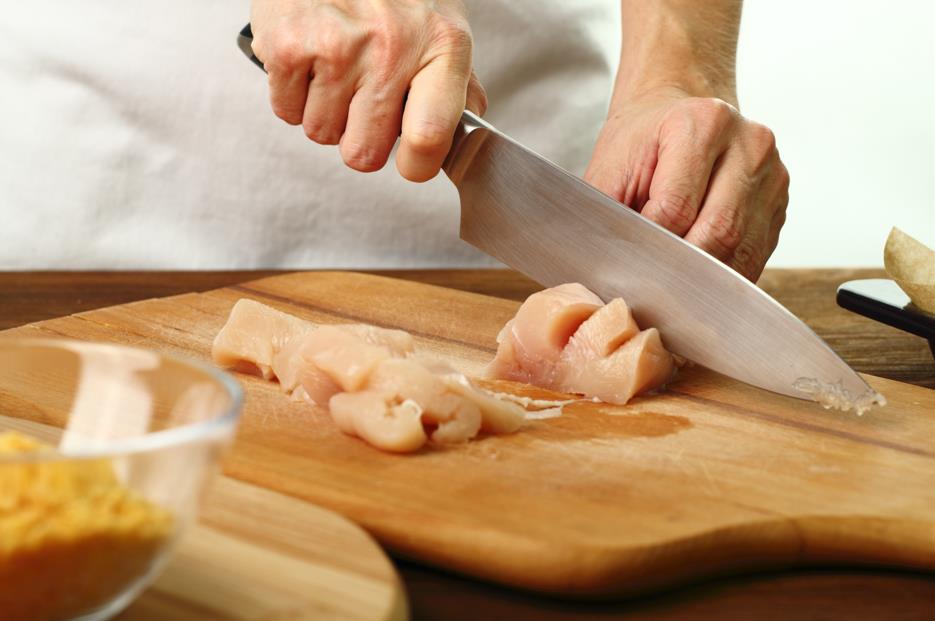
The features of a chef’s knife are just as handy for working with chicken as it is for slicing vegetables and fruits. You can easily cut through joints, slice breasts, and make slits for faster cooking. After all, these are chef’s knives, and they should be able to handle everything.
One area where you may find chef’s knives underperforming is cutting through bones as they’re not intended to be used for powerful cuts. Moreover, the edge can chip when cutting bones for extended periods, requiring you to repair the blade – not a pleasant outcome.
Best for fileting raw chicken – boning knife
Boning knives have long, narrow blades that are often flexible, allowing you to cut at different angles and positions. The thin blade performs exceptionally well when fileting breasts. If you like your chicken boneless, a boning knife is something you definitely need as it will allow you to fulfill these tasks effortlessly.
Like a chef’s knife, boning knives won’t be great tools to cut through bones. Another downside is that you don’t expect to get much out of them other than the previously mentioned duties. Nevertheless, boning knives are great tools for cooks who cut animal meats often, whether poultry, fish, or beef.
Best for cutting bones – cleaver
Where others lack, a cleaver might be the perfect knife. They’re just as good as slicing breasts, but their primary purpose is to cut through bones.
While this is a great feature, cutting a chicken into pieces may take some getting used to with a cleaver. It’s incredibly challenging to cut a chicken into separate pieces if it has a curved tip, as it will be hard to make slits to reveal the joints. If you’re looking to get a cleaver solely for cutting chicken, make sure to get one with a pointy tip.
Product recommendations for cutting chicken
Once you decide which type of blade is a better fit for you, the only thing left to do is factoring in other characteristics like edge retention, sharpening, size, and price. Here are two of the HDMD knives we recommend for cutting chicken and other meats.
HDMD Serbian Chef’s Knife
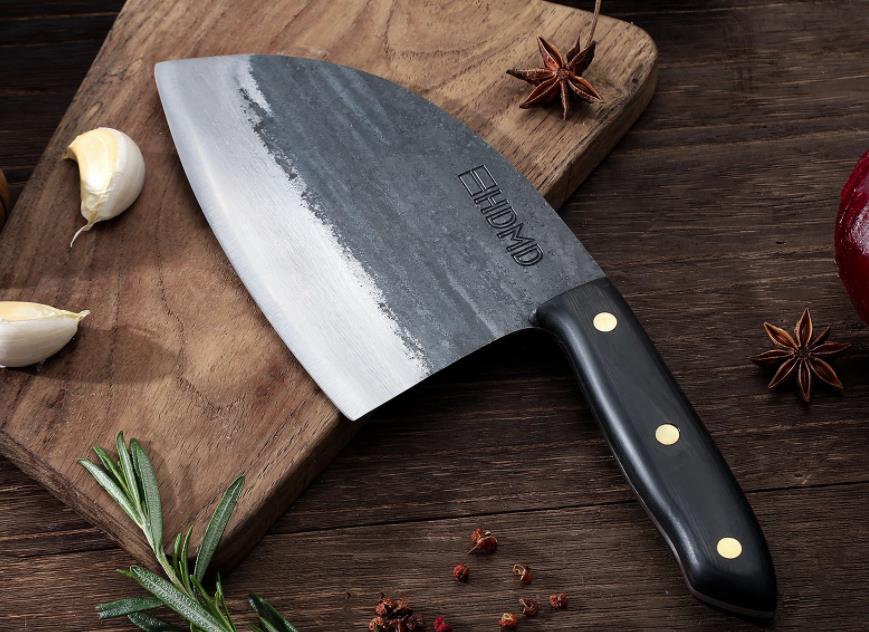
The HDMD Serbian Chef’s Knife has a pointy tip, perfect for making slits on the skin to reveal joints so that breaking chicken into pieces is more manageable. The wide blade (3.7 inches) makes cutting chicken bones effortless and ensures each breast slice is intact.
It’s a tad bit better than a regular chef’s knife as far as working with animal meat goes but also great at slicing vegetables and fruits to prepare side dishes. The scarcely curved edge enables cooks to cut ingredients by both rocking the blade or in up and down motions – functional for everyone.
HDMD Hand Forged Knife
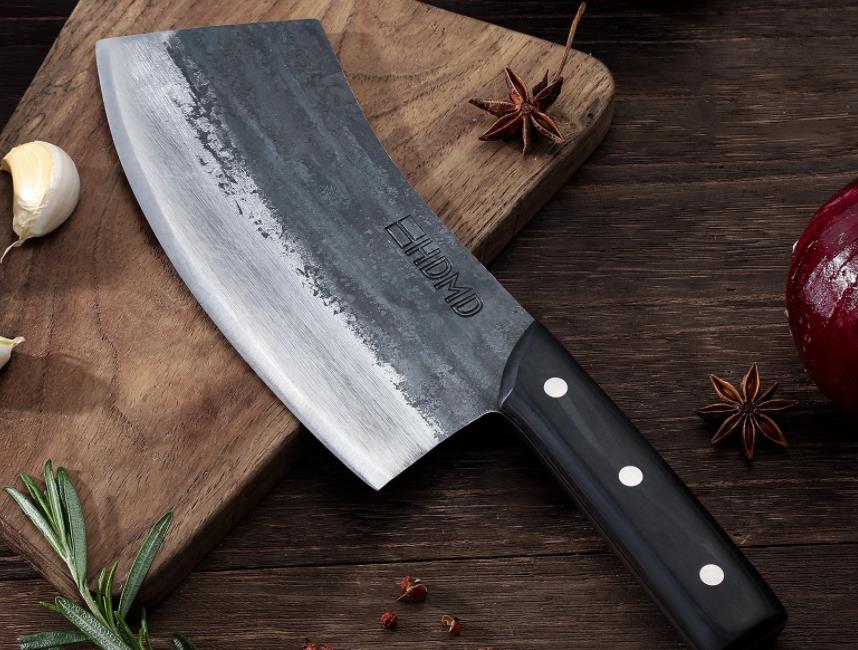
Although our Serbian Chef’s Knife is similar to a cleaver with its wide blade, those looking for an actual cleaver-like knife can benefit significantly from the HDMD Hand Forged Knife. The high carbon blade doesn’t stress in heavy-duty tasks, and is manageable for cutting through soft cartilage like chicken bones.
Another advantage of this knife is that mincing and creating tiny uniformed pieces is pretty straightforward. Place ingredients on the board and rock the blade continuously to finely chop them quickly. You can even take a chunk of breast and mince it to have essentially ground chicken.
Explorer’s Edge™ – Camp Kitchen Knife
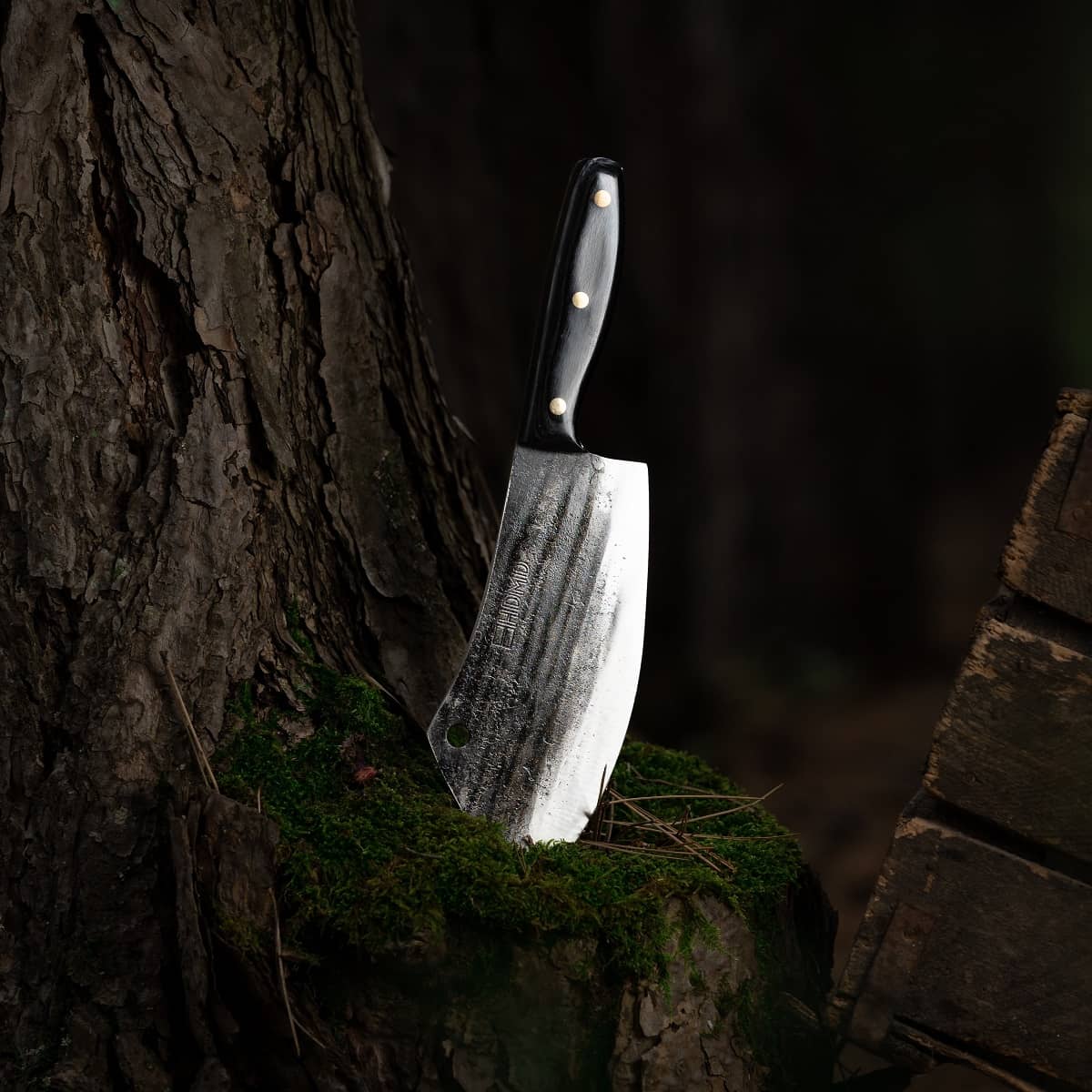
The explorer’s edge is the newest addition to the handmade collection. Crafted with precision and care, this camping-specific knife is a testament to quality and functionality. Whether you’re cutting chicken or handling various meats in the great outdoors, the Explorer’s Edge is designed to meet the demands of your culinary adventures.
Joining the ranks of our meticulously crafted knives, this newest member brings reliability and durability to the forefront, making it an indispensable tool for your outdoor pursuits. Embrace the spirit of exploration with the Explorer’s Edge, where craftsmanship meets the rugged beauty of the wilderness.
Buyer’s guide
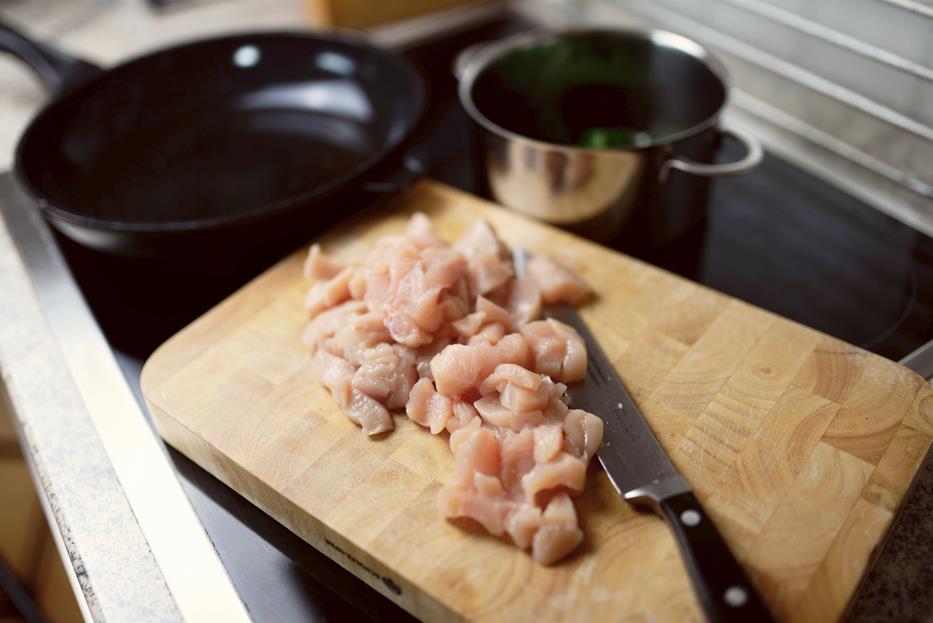
There is often a lot to discuss when figuring out the perfect knife to cut chicken. Whether you’re a home cook or an aspiring professional, revealing the right knife for the job is relatively simple. Just taking a look at how you operate with a kitchen knife will tell you a lot about if a knife is right for you or not.
Yet again, there is more ground to cover. Here is a summary that brings everything explained throughout this article together to help you make the right choice.
Comparison of chef’s knife, boning knife, and cleaver
As mentioned earlier, three primary kitchen knives used for cutting poultry are chef’s knives, boning knives, and cleavers. These knives have differences and similarities that bring something valuable in their ways.
Cleaver is different from a chef’s knife and boning knife by looks. If we were to do a size scale, a chef’s knife would fall between them as it has a wide enough body to handle some stress. Boning knives, on the other hand, have a thinner profile that makes slicing through meat easy but not great at cuts that require power.
Only for cutting chicken, however, boning knives will be a better pick for novice cooks, whereas a knife with a wider blade like the Serbian chef’s knife might be the superior option for those with experience. This is because you’re able to cut chicken normally as you would do with a chef’s knife or a boning knife, but also utilize it for other tasks that require more power.
These knives, of course, have their own uses and features that are beyond what we’ve discussed so far.
Considerations before buying
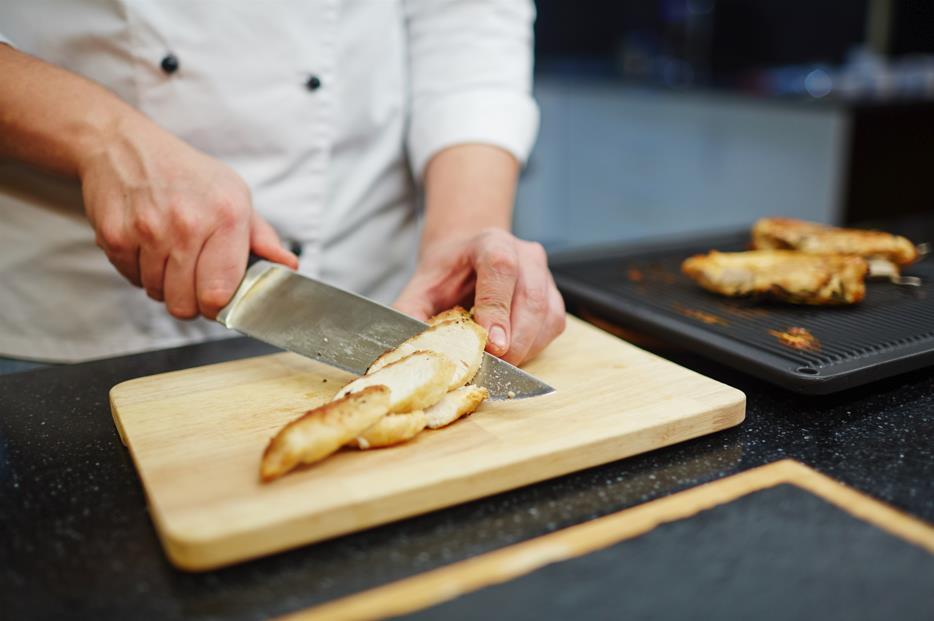
There are minor details that will lead you to the right product. There isn’t a single knife that’s best for everyone, even if it’s only for a specific intent. From our hand size to how we hold a knife to how we cut ingredients, everything is different, so what we recognize as the best knife for any purpose varies.
That said, it’s essential to identify your priorities first to understand what kind of knife will be right for you. Here are some of those small things that will make the difference in finding the right blade, not just for cutting chicken but for any other objective.
- Weight: The knife’s total weight should be a major consideration as it will feel heavier the more use it. Look for lighter blades if you intend to cut multiple hours during the day.
- Balance: Some prefer balance towards the handle; some like it the other way around, and some want their knives perfectly balanced. The benefit of a well-balanced knife is it won’t move up or down too much, making it less tiring to cut ingredients. If you prefer it towards the handle or the blade, pay attention to the packaging, as most manufacturers include this in the description.
- Sharpness: Edge retention is one of the critical things that every cook should pay attention to, as sharpening is often time-consuming. Look for knives with a harder blade that will keep an edge for long, but note that these blades also tend to be more brittle at the same time – finding the sweet spot lies under the hardness rating.
- Price: The kitchen knife prices can be tricky, and expensive doesn’t always mean a better quality blade. Make your research and shop from sites that have a good reputation. Moreover, we recommend setting aside about $50 to $100 for a good-quality kitchen knife, whether it’s for cutting cooked chicken or other foods.
- Care: Some knives require more maintenance than others, such as those made from high carbon steel. If you can show some care to your knife, carbon steel knives are one of the best you can get your hands onto, but stainless steel remains an option for people that don’t want to pay attention to their knives as much.
- Function: If you want to get more out of a knife than just its intended use, we recommend looking at more versatile options like a chef’s knife or a utility knife.
Best knife to cut chicken
True cutting power in the palm of your hand
Final words
The biggest takeaway from this buyer’s guide for finding the perfect knife to cut chicken is identifying your needs and what you demand from a kitchen knife. Once you figure these out, it will be easy to pick the right knife. Visit our collection to shop for handmade knives that will make you cut with ease every ingredient.
FAQs
How to cut chicken?
Cutting chicken is always a multi-step process whether you’re cutting a whole bird, wing, breast, thigh, or order parts. We’ve covered all of these on our blog, where you can get some insights on cutting chicken perfectly. Read cutting chicken on HDMD Knives blog.
Should I cut chicken breast with or against the grain?
The direction you cut chicken breasts matters significantly due to the muscle fibers. In a whole chicken breast, the muscle fibers run in different directions, and you can spot where by simply taking a closer look or running your fingers over it. Cutting against the grain gives you shorter muscle fibers in each piece, resulting in tender bites when cooked. The muscle fibers are longer when cut with the grain; therefore, pieces won’t be as tender. For this reason alone, it’s best to cut chicken against the grain.
Should I cut chicken before or after cooking?
There are several benefits to cutting chicken before cooking unless you plan to have a whole cooked bird. Firstly, cooking time is significantly reduced when chicken is cut into pieces as the heat gets through the pieces more easily. The same logic also applies to marinating it. The seasoning and sauce will get to the insides a lot faster when in parts compared to as a whole.







